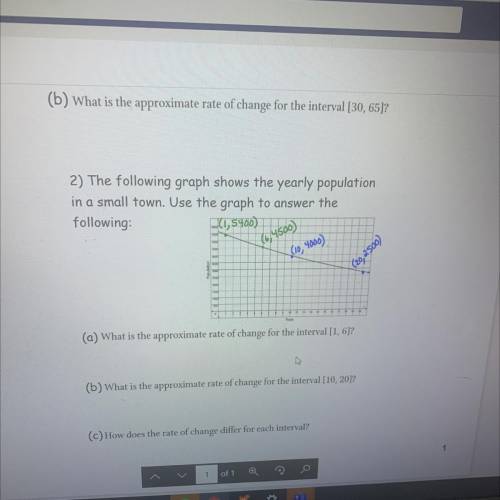
Mathematics, 21.10.2020 23:01, familyk0jj3
2) The following graph shows the yearly population
in a small town. Use the graph to answer the
following:
(1,5900)
14/4500)
(10,4000)
(29,2500)
(a) What is the approximate rate of change for the interval [1, 6)?
(b) What is the approximate rate of change for the interval [10, 2017
(c) How does the rate of change differ for each interval?


Answers: 2
Other questions on the subject: Mathematics

Mathematics, 21.06.2019 13:30, rivasalejandro854
Danielle has $127.02 in her account before making any transactions. over the course of a week, danielle makes the following transactions: transaction debit ($) credit ($) birthday check 75.00 night out 66.14 garage sale proceeds 121.58 charitable donation 42.25 doctor’s appointment 115.30 at the end of the week, how much money is in danielle’s account? a. $99.91 b. $27.11 c. $184.41 d. $142.16 select the best answer from the choices provided a b c d
Answers: 1


Do you know the correct answer?
2) The following graph shows the yearly population
in a small town. Use the graph to answer the
Questions in other subjects:



History, 27.08.2019 01:30


Spanish, 27.08.2019 01:30

Mathematics, 27.08.2019 01:30




Biology, 27.08.2019 01:30








